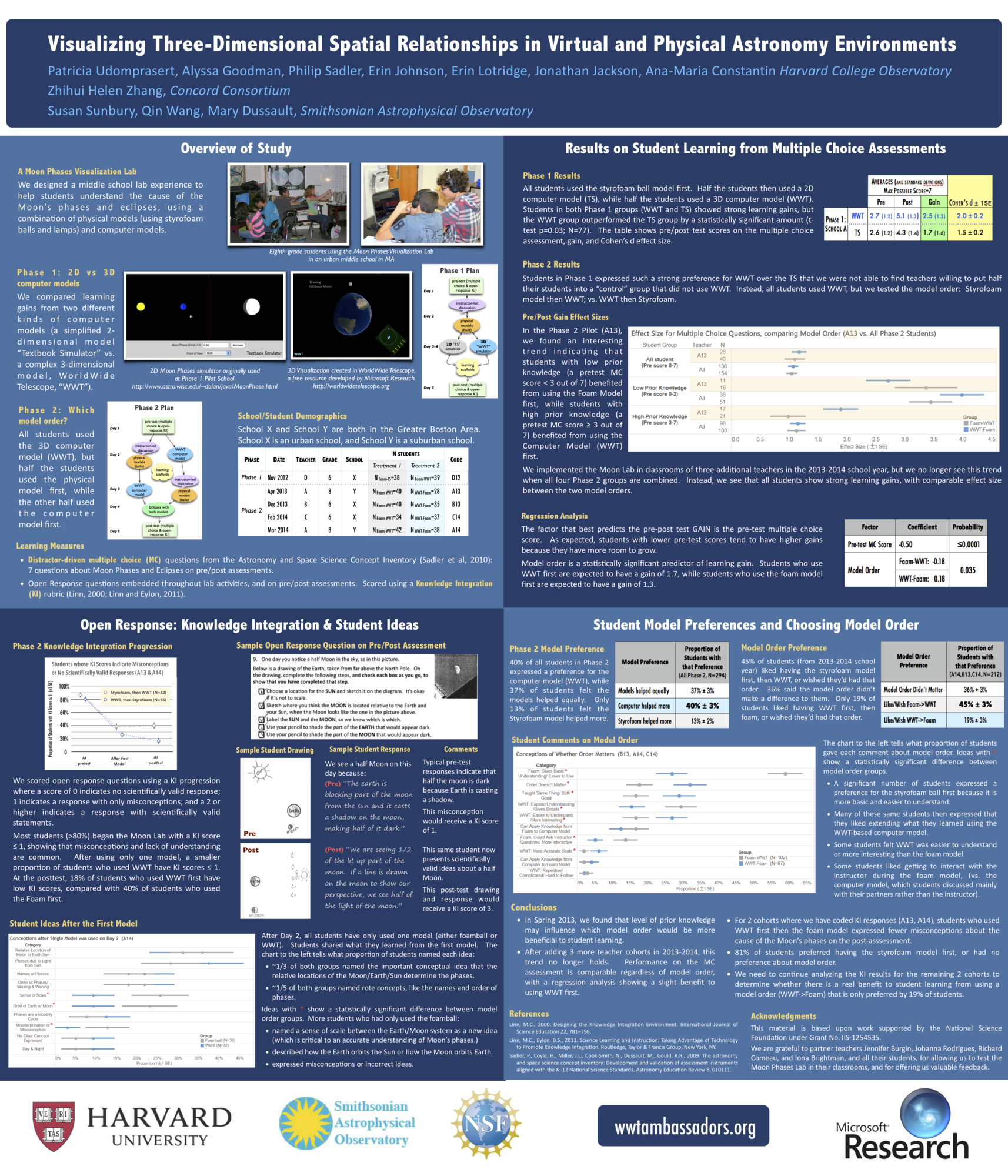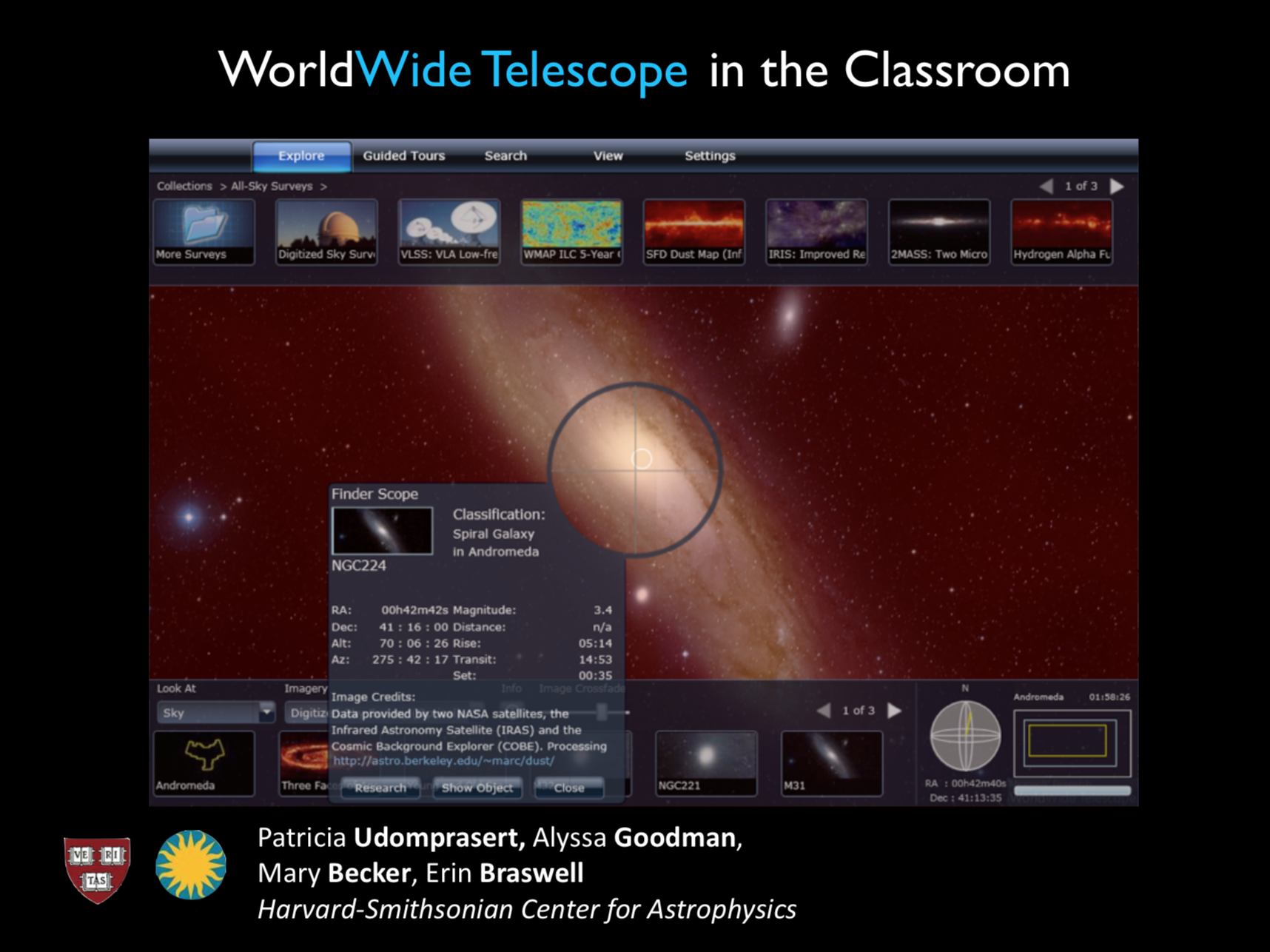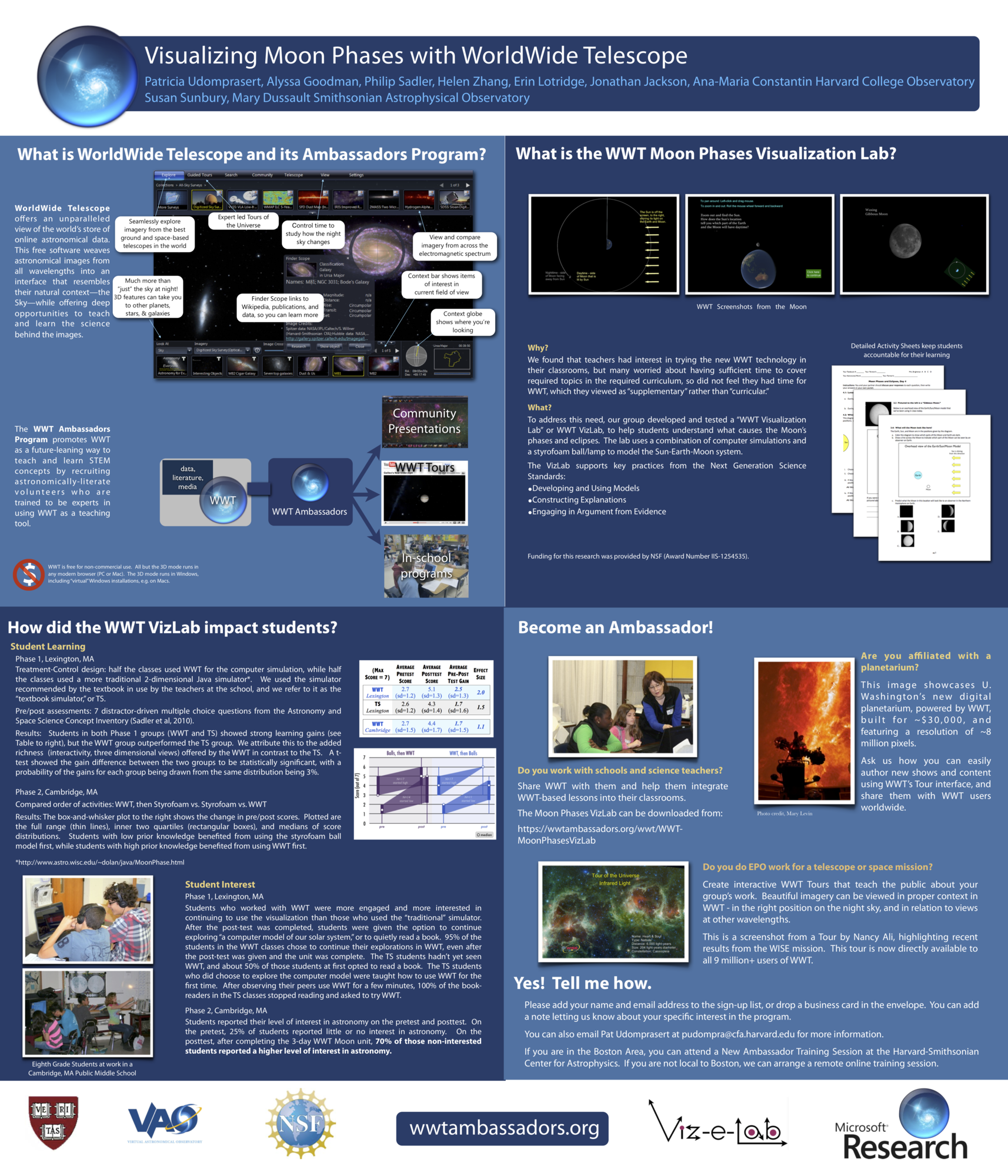Udomprasert P, Goodman AA, Sunbury S, Zhang Z, Sadler PM, Dussault ME, Lotridge E, Jackson J, Constantin A.
Visualizing Moon Phases in the Classroom with WorldWide Telescope, in
American Astronomical Society, AAS Meeting #223. Washington, DC: American Astronomical Society ; 2014.
Publisher's VersionAbstract
We report results from an NSF-funded project to build, test, and research the impact of a WorldWide Telescope Visualization Lab (WWT Vizlab), meant to offer learners a deeper physical understanding of the causes of the Moon’s phases and eclipses. The Moon Phases VizLab is designed to promote accurate visualization of the complex, 3-dimensional Earth-Sun-Moon relationships required to understand the Moon’s phases, while also providing opportunities for middle school students to practice critical science skills, like using models, making predictions and observations, and linking them in evidence-based explanations. In the Moon Phases VizLab, students use both computer-based models and lamp + ball physical models. The VizLab emphasizes the use of different scales in models, why some models are to scale and some are not, and how choices we make in a model can sometimes inadvertently lead to misconceptions. For example, textbook images almost always depict the Earth and Moon as being vastly too close together, and this contributes to the common misconception that the Moon’s phases are caused by the Earth’s shadow. We tested the Moon Phases VizLab in two separate phases. In Phase 1 (fall 2012), we compared learning gains from the WorldWide Telescope (WWT) VizLab with a traditional 2-dimensional Moon phases simulator. Students in this study who used WWT had overall higher learning gains than students who used the traditional 2D simulator, and demonstrated greater enthusiasm for using the virtual model than students who used the 2D simulator. In Phase 2 (spring 2013), all students in the study used WWT for the virtual model, but we experimented with different sequencing of physical and virtual models in the classroom. We found that students who began the unit with higher prior knowledge of Moon phases (based on the pre-unit assessment) had overall higher learning gains when they used the virtual model first, followed by the physical model, while students who had lower prior knowledge benefited from using the physical model first, then the virtual model.




